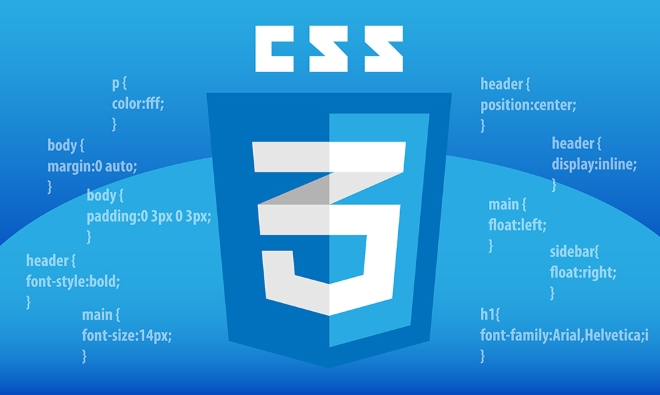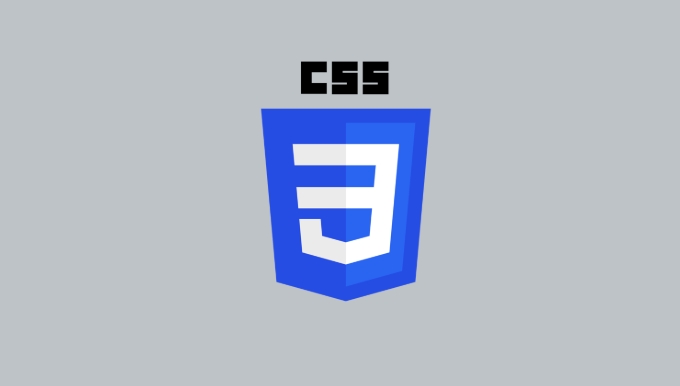Use CSS pseudo-element::-webkit-scrollbar to customize scrollbar styles, 1. Set scrollbar width; 2. Define track background color; 3. Set slider color and rounded corners; 4. Add hover effect; 5. Apply styles to specific containers. Firefox uses scrollbar-width and scrollbar-color for simple control. IE/old browsers need to accept the default style or use plug-ins instead. Hide the scroll bar to set display: none, and pay attention to color matching and responsive design, and beautify it moderately to enhance the experience.

The default style of the browser scrollbars tends to appear monotonous, while CSS provides pseudo-elements that allow us to customize the appearance of the scrollbars. This method is better supported in WebKit-based browsers such as Chrome and Edge, but may not work in Firefox or older browsers, and needs to be handled or accepted separately.

How to use ::-webkit-scrollbar pseudo-element
WebKit kernel browsers (such as Chrome and Safari) support customizing various parts of the scrollbar through ::-webkit-scrollbar pseudo-element. You can modify the style of scroll bar tracks, sliders, up and down arrows, etc.

The basic structure is as follows:
::-webkit-scrollbar {
width: 8px; /* scroll bar width*/
}
::-webkit-scrollbar-track {
background: #f1f1f1; /* track background color*/
}
::-webkit-scrollbar-thumb {
background: /* slider color*/
border-radius: 4px; /* rounded corner*/
}
::-webkit-scrollbar-thumb:hover {
background: #555; /* Color when hovering*/
}If you just want to set scrollbar styles for a specific container, instead of taking effect globally, you can write this:

.container::-webkit-scrollbar {
width: 6px;
}Compatibility issues and response strategies
Currently only WebKit browsers support ::-webkit-scrollbar , which means that these styles will not work in Firefox or IE.
Firefox Solution:
Firefox uses scrollbar-width and scrollbar-color properties for simple control:
/* Firefox */
.container {
scrollbar-width: thin; /* Optional value: auto / thin / none */
scrollbar-color: #888 #f1f1f1; /* slider color track color*/
}It should be noted that these properties of Firefox can only be adjusted in limited ways and cannot implement fine style control like WebKit.
IE/Old Browser:
For unsupported browsers, it is common to accept the default style, or replace native scrollbars with JavaScript plugins (such as Perfect Scrollbar or OverlayScrollbars), but this increases page complexity and load time.
Practical tips and precautions
Hide scrollbar but retain scrolling function
Sometimes you want to visually hide the scrollbar but still allow content to scroll, which can be done by (for WebKit browsers):.container::-webkit-scrollbar { display: none; }Scroll bar color matching suggestions
Keep the scroll bar color consistent with the overall page style and avoid abruptness. For example, under the dark theme, you can use dark gray sliders with light gray tracks.Test performance under different screen sizes
Mobile devices usually automatically hide scroll bars, and the CSS customization effect may not be obvious or completely invalid, so performance consistency in responsive design needs to be considered.-
Don't rely too much on scrollbar beautification
- If the project requires a highly unified UI, the scrollbar plugin may be a better choice.
- Otherwise, you can just beautify it to enhance the experience, and there is no need to force all browsers to be consistent.
Basically that's it. Although scroll bar style customization is not a necessary item, it can improve the detailed experience. Mastering pseudo-elements and compatibility processing can achieve good visual optimization in most modern browsers.
The above is the detailed content of Customizing scrollbar appearance with CSS pseudo-elements. For more information, please follow other related articles on the PHP Chinese website!

Hot AI Tools

Undress AI Tool
Undress images for free

Undresser.AI Undress
AI-powered app for creating realistic nude photos

AI Clothes Remover
Online AI tool for removing clothes from photos.

Clothoff.io
AI clothes remover

Video Face Swap
Swap faces in any video effortlessly with our completely free AI face swap tool!

Hot Article

Hot Tools

Notepad++7.3.1
Easy-to-use and free code editor

SublimeText3 Chinese version
Chinese version, very easy to use

Zend Studio 13.0.1
Powerful PHP integrated development environment

Dreamweaver CS6
Visual web development tools

SublimeText3 Mac version
God-level code editing software (SublimeText3)

Hot Topics
 CSS tutorial for creating loading spinners and animations
Jul 07, 2025 am 12:07 AM
CSS tutorial for creating loading spinners and animations
Jul 07, 2025 am 12:07 AM
There are three ways to create a CSS loading rotator: 1. Use the basic rotator of borders to achieve simple animation through HTML and CSS; 2. Use a custom rotator of multiple points to achieve the jump effect through different delay times; 3. Add a rotator in the button and switch classes through JavaScript to display the loading status. Each approach emphasizes the importance of design details such as color, size, accessibility and performance optimization to enhance the user experience.
 Addressing CSS Browser Compatibility issues and prefixes
Jul 07, 2025 am 01:44 AM
Addressing CSS Browser Compatibility issues and prefixes
Jul 07, 2025 am 01:44 AM
To deal with CSS browser compatibility and prefix issues, you need to understand the differences in browser support and use vendor prefixes reasonably. 1. Understand common problems such as Flexbox and Grid support, position:sticky invalid, and animation performance is different; 2. Check CanIuse confirmation feature support status; 3. Correctly use -webkit-, -moz-, -ms-, -o- and other manufacturer prefixes; 4. It is recommended to use Autoprefixer to automatically add prefixes; 5. Install PostCSS and configure browserslist to specify the target browser; 6. Automatically handle compatibility during construction; 7. Modernizr detection features can be used for old projects; 8. No need to pursue consistency of all browsers,
 Styling visited links differently with CSS
Jul 11, 2025 am 03:26 AM
Styling visited links differently with CSS
Jul 11, 2025 am 03:26 AM
Setting the style of links you have visited can improve the user experience, especially in content-intensive websites to help users navigate better. 1. Use CSS's: visited pseudo-class to define the style of the visited link, such as color changes; 2. Note that the browser only allows modification of some attributes due to privacy restrictions; 3. The color selection should be coordinated with the overall style to avoid abruptness; 4. The mobile terminal may not display this effect, and it is recommended to combine it with other visual prompts such as icon auxiliary logos.
 Creating custom shapes with css clip-path
Jul 09, 2025 am 01:29 AM
Creating custom shapes with css clip-path
Jul 09, 2025 am 01:29 AM
Use the clip-path attribute of CSS to crop elements into custom shapes, such as triangles, circular notches, polygons, etc., without relying on pictures or SVGs. Its advantages include: 1. Supports a variety of basic shapes such as circle, ellipse, polygon, etc.; 2. Responsive adjustment and adaptable to mobile terminals; 3. Easy to animation, and can be combined with hover or JavaScript to achieve dynamic effects; 4. It does not affect the layout flow, and only crops the display area. Common usages are such as circular clip-path:circle (50pxatcenter) and triangle clip-path:polygon (50%0%, 100 0%, 0 0%). Notice
 What is the difference between display: inline, display: block, and display: inline-block?
Jul 11, 2025 am 03:25 AM
What is the difference between display: inline, display: block, and display: inline-block?
Jul 11, 2025 am 03:25 AM
Themaindifferencesbetweendisplay:inline,block,andinline-blockinHTML/CSSarelayoutbehavior,spaceusage,andstylingcontrol.1.Inlineelementsflowwithtext,don’tstartonnewlines,ignorewidth/height,andonlyapplyhorizontalpadding/margins—idealforinlinetextstyling
 What is the CSS Painting API?
Jul 04, 2025 am 02:16 AM
What is the CSS Painting API?
Jul 04, 2025 am 02:16 AM
TheCSSPaintingAPIenablesdynamicimagegenerationinCSSusingJavaScript.1.DeveloperscreateaPaintWorkletclasswithapaint()method.2.TheyregisteritviaregisterPaint().3.ThecustompaintfunctionisthenusedinCSSpropertieslikebackground-image.Thisallowsfordynamicvis
 How to create responsive images using CSS?
Jul 15, 2025 am 01:10 AM
How to create responsive images using CSS?
Jul 15, 2025 am 01:10 AM
To create responsive images using CSS, it can be mainly achieved through the following methods: 1. Use max-width:100% and height:auto to allow the image to adapt to the container width while maintaining the proportion; 2. Use HTML's srcset and sizes attributes to intelligently load the image sources adapted to different screens; 3. Use object-fit and object-position to control image cropping and focus display. Together, these methods ensure that the images are presented clearly and beautifully on different devices.
 What is CSS and what does it stand for?
Jul 03, 2025 am 01:48 AM
What is CSS and what does it stand for?
Jul 03, 2025 am 01:48 AM
CSS,orCascadingStyleSheets,isthepartofwebdevelopmentthatcontrolsawebpage’svisualappearance,includingcolors,fonts,spacing,andlayout.Theterm“cascading”referstohowstylesareprioritized;forexample,inlinestylesoverrideexternalstyles,andspecificselectorslik






